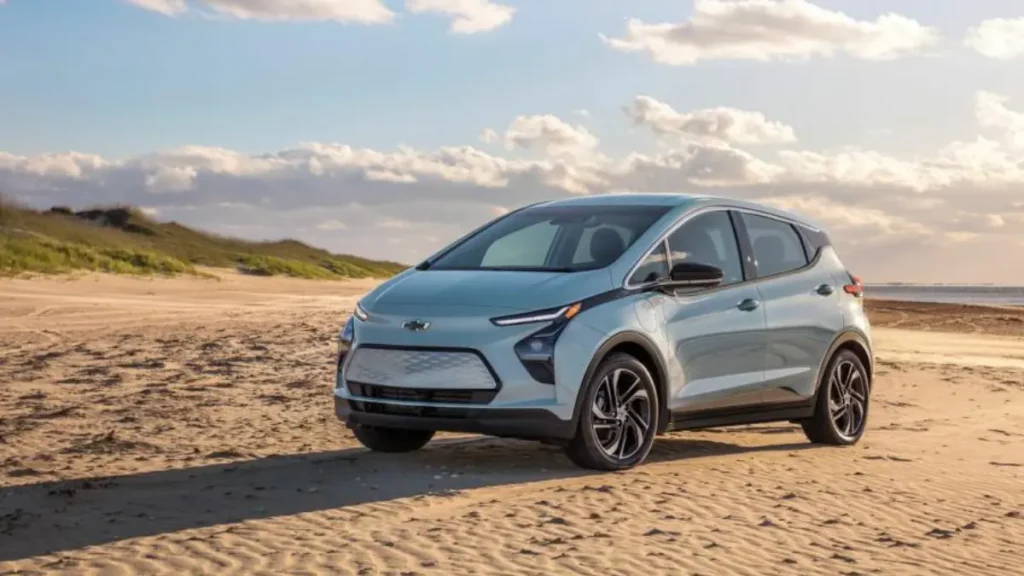Electric cars have evolved rapidly, not only in terms of technology and range but also in safety features. As these vehicles become more popular, manufacturers are incorporating advanced safety technologies to protect drivers, passengers, and pedestrians.
Here’s a comprehensive look at the key safety features commonly found in electric cars and how they contribute to safer driving experiences.
1. Advanced Driver Assistance Systems (ADAS)
Adaptive Cruise Control
Adaptive Cruise Control (ACC) maintains a set speed while automatically adjusting to the speed of the vehicle ahead. This feature enhances safety by ensuring that the vehicle maintains a safe distance from other cars, reducing the risk of collisions caused by sudden speed changes.
Lane Departure Warning and Lane-Keeping Assist
Lane Departure Warning (LDW) alerts drivers if they unintentionally drift out of their lane, while Lane-Keeping Assist (LKA) actively helps steer the vehicle back into its lane. These features are crucial for preventing lane-keeping errors and enhancing overall road safety.
Automatic Emergency Braking
Automatic Emergency Braking (AEB) detects potential collisions and applies the brakes automatically if the driver doesn’t react in time. This system can prevent or mitigate the severity of accidents, particularly in situations involving sudden stops or obstacles.
Blind Spot Monitoring
Blind Spot Monitoring (BSM) uses sensors to detect vehicles in the driver’s blind spots and provides alerts when changing lanes. This feature helps reduce the risk of side collisions by ensuring that drivers are aware of vehicles that may not be visible in their mirrors.
2. Enhanced Parking Assistance
360-Degree Camera Systems
360-Degree Camera Systems provide a bird’s-eye view of the vehicle’s surroundings, making parking and maneuvering in tight spaces easier and safer. This system helps drivers detect obstacles and avoid collisions while parking.
Parking Sensors
Parking sensors use ultrasonic or radar technology to detect objects around the vehicle. They provide audible or visual alerts to help drivers avoid obstacles while reversing or parking, reducing the risk of low-speed collisions.
Automatic Parking Assist
Automatic Parking Assist (APA) helps drivers park their vehicle by controlling the steering, acceleration, and braking. This feature simplifies parallel and perpendicular parking, making it easier for drivers to park in tight spaces with minimal effort.
3. Advanced Airbag Systems
Multi-Stage Airbags
Multi-Stage Airbags deploy in stages depending on the severity of a collision. This advanced airbag system offers better protection by adjusting the inflation force based on the impact’s intensity, reducing the risk of injury during accidents.
Side-Impact Airbags
Side-Impact Airbags deploy from the sides of the vehicle to protect occupants in the event of a side collision. These airbags help reduce the risk of injuries from side impacts by providing additional cushioning and protection.
Curtain Airbags
Curtain Airbags deploy from the roof area and cover the side windows to protect occupants’ heads during side collisions or rollovers. This feature enhances safety by offering protection in the event of a side impact or rollover accident.
4. Traction and Stability Control
Electronic Stability Control (ESC)
Electronic Stability Control (ESC) helps maintain vehicle stability by detecting and reducing skidding or loss of traction. ESC automatically applies braking to individual wheels and adjusts engine power to help drivers regain control during slippery conditions or emergency maneuvers.
Traction Control System (TCS)
Traction Control System (TCS) prevents wheel spin during acceleration by adjusting engine power or applying brakes to individual wheels. This feature enhances traction on slippery surfaces, improving stability and reducing the risk of skidding.
5. Pedestrian Detection and Protection
Pedestrian Detection Systems
Pedestrian Detection Systems use sensors and cameras to identify pedestrians in or near the vehicle’s path. These systems provide warnings to the driver and can automatically apply the brakes to avoid collisions with pedestrians.
Collision Avoidance Systems
Collision Avoidance Systems work in conjunction with pedestrian detection to prevent accidents by detecting potential collisions with objects or pedestrians and taking corrective actions, such as automatic braking or steering adjustments.
6. High-Strength Structural Components
Reinforced Crash Structures
Electric cars often feature reinforced crash structures designed to absorb and dissipate impact energy. These structures, including crumple zones and reinforced side panels, help protect occupants during collisions by reducing the force transmitted to the cabin.
Battery Safety Features
Electric vehicles are equipped with battery safety features to prevent fires and protect the battery in the event of an accident. These features include reinforced battery enclosures, automatic disconnect systems, and thermal management to prevent overheating.
7. Driver Monitoring Systems
Drowsiness Detection
Drowsiness Detection systems monitor driver behavior and alert the driver if signs of drowsiness or inattention are detected. This feature helps prevent accidents caused by driver fatigue by encouraging breaks or offering alerts.
Attention Assist
Attention Assist uses sensors and algorithms to detect changes in driving patterns that may indicate a lack of focus or attentiveness. The system provides warnings and recommendations to help the driver stay alert and maintain safe driving practices.
8. Enhanced Visibility Features
Automatic High Beams
Automatic High Beams adjust the vehicle’s headlights based on traffic conditions. They automatically switch between high and low beams to provide optimal visibility while avoiding glare for other drivers, enhancing safety during nighttime driving.
Head-Up Displays
Head-Up Displays (HUDs) project important driving information, such as speed and navigation instructions, onto the windshield. This feature helps drivers stay focused on the road by reducing the need to look down at the dashboard.
Conclusion
Electric cars are equipped with a range of advanced safety features designed to enhance driving safety and protect occupants. From driver assistance systems and advanced airbag technologies to pedestrian detection and reinforced structural components, these features contribute to a safer driving experience. As electric vehicles continue to evolve, ongoing advancements in safety technology will further enhance their effectiveness and reliability.




